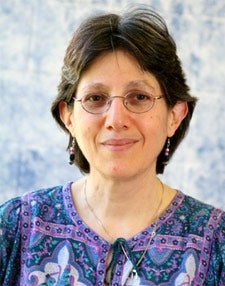SYRACUSE, N.Y., Oct. 12 (JTA) — Pick up a synagogue bulletin and you are likely to read about a variety of programs. From book discussions to Torah study to lectures by local and visiting scholars, there are many opportunities for adults to learn. Walk into the congregation’s religious school classrooms and you will see children engaged in activities. There will likely be many resources around: colorful textbooks, art materials and idea books for the teacher. We aim to engage our congregants — young and old. We want to be sure that they are choosing to attend and leaving happy and enthusiastic about being in our congregations. Often our programs for adults are developed by a variety of committees, each addressing different interests. Classroom activities are developed by classroom teachers without an explicit weaving of one lesson’s activities into other aspects and goals of the curriculum. A few years ago, the leadership fo Temple Society of Concord, my Reform synagogue in Syracuse, N.Y., decided that we were doing many programs and activities, yet were not sure where they were heading and whether we held the same vision of Jewish learning. What did we think our congregants wanted to know? What did we feel should be learned? Who was coming to study and who was missing? Were our programs addressing the same themes and missing others? We brought committee chairs, congregational professionals and lay leadership together to begin to wrestle with these questions. Our goal was to engage all of our congregants in learning by better meeting their needs through a coordinated program that addressed many facets of Judaism. Our hope was that learning would lead to increased engagement in the congregational and wider Jewish community. At the same time, our religious school’s board of education decided that it was time to review our curriculum and school program. The curriculum committee’s process used the Understanding by Design model. Instead of focusing on what should be taught at each grade and what textbooks should be used, they began with what they wanted our students to use in the future. Interestingly, both groups arrived at the same conclusions, which led to our seven guiding priciples. No matter their age, we wanted our congregants to: • Understand that our purpose as a Jewish people is tikkun olam — to make the world a better place. • Have the skills and knowledge to apply Jewish values to our everyday lives. • Have the skills and knowledge to understand Jewish history and experiences in order to articulate the uniqueness of the Jewish people. • Have the skills and knowledge to use both Hebrew and English in prayer, ceremonies and celebrations. • Have the skills and knowledge to articulate our ongoing connection to Israel. • Have the skills and knowledge to engage in ongoing study of Torah and integrate its teachings into our lives. • Have opportunities to share their joy, pride and enthusiasm about Judaism and the Jewish community. We also articulated some understandings that underlie our work and ongoing decisions. First, our overall goal was to ensure that learning focused on promoting Jewish living. Judaism is not meant to be an academic subject alone. We are meant to use our Jewish knowledge to guide our decisions and interactions. We also want our congregants to see Jewish learning as a lifelong pursuit. We want our children to see their parents and other adults of all ages attending classes and one-time programs. We create opportunities for families to learn together and for our entire congregation to engage in learning and “doing Jewish.” Jewish professionals should also remain learners, continuing our own professional growth and Jewish study. As Jewish educators, we hope that through their learning and experiences, our congregants’ values will include education. And that they will become educators themselves, through their actions and deeds. (Iris Petroff is the director of membership and programs, family educator and confirmation teacher at Temple Society of Concord, a Reform congregation in Syracuse, N.Y. She is also the president of the Coalition for the Advancement of Jewish Education.)
JTA has documented Jewish history in real-time for over a century. Keep our journalism strong by joining us in supporting independent, award-winning reporting.






